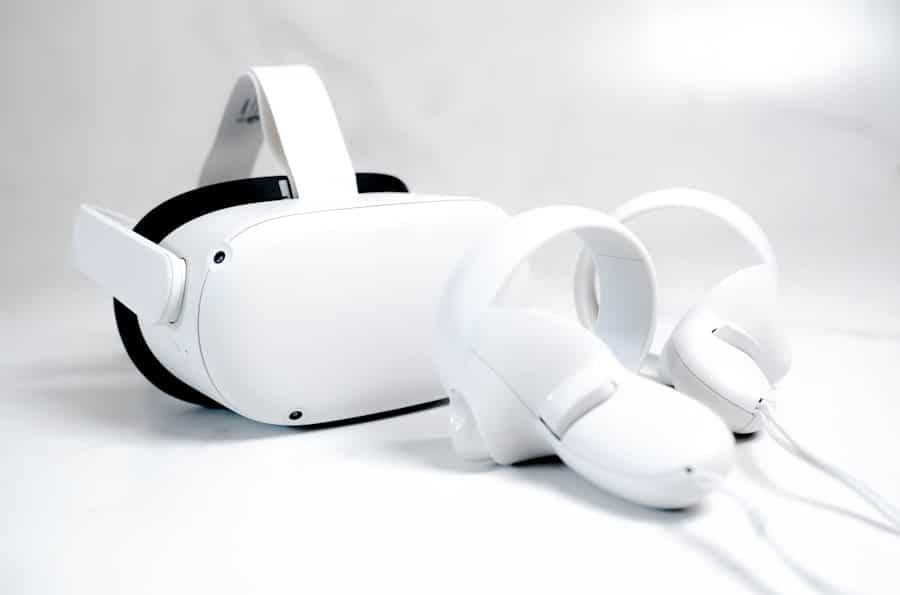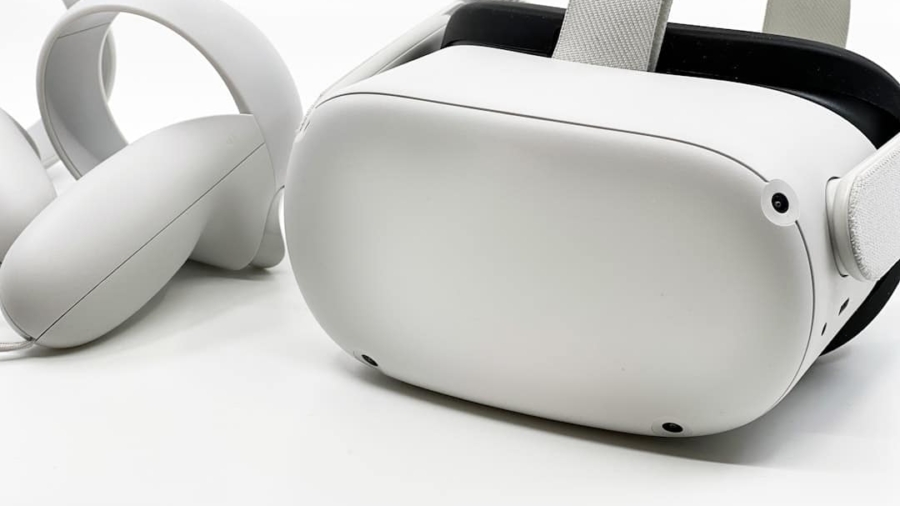Virtual reality (VR) headsets have revolutionized the way we experience digital content, offering immersive environments that transport users into entirely new worlds. This technology has evolved significantly since its inception, moving from rudimentary systems to sophisticated devices that provide lifelike experiences. VR headsets utilize advanced optics, motion tracking, and audio technology to create a sense of presence, allowing users to interact with virtual environments in ways that were previously unimaginable.
As the technology continues to advance, VR is finding applications not only in gaming but also in education, training, healthcare, and social interaction. The appeal of VR headsets lies in their ability to engage multiple senses simultaneously. By combining visual stimuli with spatial audio and haptic feedback, these devices create a compelling illusion of reality.
Users can explore vast landscapes, engage in thrilling adventures, or even participate in collaborative workspaces with others from around the globe. As the market for VR technology expands, various manufacturers have introduced their own headsets, each with unique features and capabilities. This article will delve into some of the leading VR headsets available today, comparing their strengths and weaknesses to help potential users make informed decisions.
Key Takeaways
- VR headsets offer immersive virtual reality experiences
- Oculus Rift, HTC Vive, PlayStation VR, Samsung Gear VR, and Google Daydream View are top VR headsets
- Oculus Rift is a leader in VR technology with high-quality display and tracking
- HTC Vive provides a high-end VR experience with room-scale tracking and motion controllers
- PlayStation VR offers a gaming-focused virtual reality experience for console gamers
- Samsung Gear VR is an affordable and accessible VR option for Samsung smartphone users
- Google Daydream View provides a high-quality mobile VR experience for compatible smartphones
- Consider your budget, gaming preferences, and device compatibility when choosing the right VR headset
Comparison of Top VR Headsets
When evaluating the top VR headsets on the market, several key factors come into play: display quality, tracking capabilities, comfort, and content availability. Each headset offers a different combination of these elements, catering to various user preferences and budgets. For instance, high-end models like the Oculus Rift and HTC Vive are known for their superior graphics and immersive experiences but come with a higher price tag and require powerful gaming PCs.
In contrast, more affordable options like the Samsung Gear VR and Google Daydream View provide accessible entry points into virtual reality but may sacrifice some performance and features. Display quality is a critical aspect of any VR headset. The resolution of the screens directly impacts the clarity of the virtual environment.
For example, the Oculus Rift S boasts a resolution of 2560 x 1440 pixels, providing sharp visuals that enhance immersion. Meanwhile, the HTC Vive Pro takes it a step further with a resolution of 2880 x 1600 pixels, delivering even crisper images. On the other hand, mobile-based headsets like the Samsung Gear VR typically offer lower resolutions since they rely on smartphones for display.
This disparity in display quality can significantly affect the overall user experience, particularly in visually demanding applications such as gaming or simulations. Tracking capabilities are another essential consideration when comparing VR headsets. Accurate tracking allows users to move freely within a virtual space without experiencing lag or disorientation.
The HTC Vive utilizes external base stations for precise room-scale tracking, enabling users to walk around and interact with their environment seamlessly. In contrast, the Oculus Quest employs an inside-out tracking system that uses built-in cameras to monitor the user’s movements without external sensors. While this makes the Quest more portable and easier to set up, some users may prefer the accuracy offered by external tracking systems found in higher-end models.
Oculus Rift: The Leader in VR Technology

The Oculus Rift has long been regarded as a pioneer in the realm of virtual reality. Launched by Oculus VR in 2016, it set a new standard for immersive gaming experiences. The Rift features dual OLED displays with a combined resolution of 2160 x 1200 pixels, providing vibrant colors and deep blacks that enhance the realism of virtual environments.
Its wide field of view and low latency contribute to a sense of presence that is hard to match. The headset is designed for use with a gaming PC, which allows it to leverage powerful graphics cards for high-quality rendering. One of the standout features of the Oculus Rift is its extensive library of games and applications.
Titles such as “Beat Saber,” “Half-Life: Alyx,” and “Lone Echo” showcase the potential of VR gaming and have garnered critical acclaim for their innovative gameplay mechanics and immersive storytelling. Additionally, Oculus has invested heavily in developing social experiences within virtual reality, allowing users to connect with friends and engage in shared activities regardless of physical distance. The Oculus Home platform serves as a hub for users to access their games, socialize with others, and customize their virtual spaces.
Comfort is another area where the Oculus Rift excels. The headset is designed with adjustable straps and cushioning that allow for extended wear without discomfort. This is particularly important for gamers who may spend hours immersed in virtual worlds.
Furthermore, Oculus has implemented features such as IPD (interpupillary distance) adjustment to accommodate different eye distances, ensuring that users can achieve optimal visual clarity. Overall, the Oculus Rift remains a top choice for those seeking a high-quality VR experience.
HTC Vive: A High-End VR Experience
The HTC Vive represents another significant player in the VR market, known for its premium build quality and advanced tracking capabilities. Launched in 2016 alongside the Oculus Rift, the Vive was developed in collaboration with Valve Corporation, which brought its expertise in gaming technology to the project. The Vive features dual AMOLED displays with a resolution of 2160 x 1200 pixels and a refresh rate of 90 Hz, providing smooth visuals that enhance immersion during gameplay.
One of the defining characteristics of the HTC Vive is its room-scale tracking system. Utilizing external base stations placed in corners of a room, the Vive can accurately track user movements across a larger physical space. This allows players to walk around and interact with their environment more naturally than many other headsets that rely on limited tracking ranges.
The inclusion of handheld controllers further enhances this experience by enabling users to manipulate objects within virtual environments intuitively. The Vive’s content library is robust, featuring a wide array of games and applications that cater to various interests. Titles like “The Walking Dead: Saints & Sinners” and “Job Simulator” have received praise for their engaging gameplay and innovative use of VR technology.
Additionally, HTC has made strides in expanding its offerings beyond gaming by promoting applications for education, training simulations, and virtual meetings. This versatility makes the HTC Vive an attractive option for both gamers and professionals seeking immersive experiences.
PlayStation VR: Gaming in Virtual Reality
Sony’s PlayStation VR (PSVR) has carved out a niche within the virtual reality landscape by providing an accessible option for console gamers. Launched in 2016 as an accessory for the PlayStation 4, PSVR offers an entry point into virtual reality without requiring a high-end gaming PThe headset features an OLED display with a resolution of 1920 x 1080 pixels and supports a wide range of PlayStation titles designed specifically for VR. One of the key advantages of PSVR is its integration with the PlayStation ecosystem.
Gamers who already own a PlayStation console can easily adopt VR without investing in additional hardware. The headset is compatible with popular titles such as “Astro Bot Rescue Mission,” “Resident Evil 7: Biohazard,” and “Moss,” showcasing its ability to deliver engaging experiences across various genres. Furthermore, Sony has committed to expanding its library of VR content through ongoing support and development efforts.
Comfort is also a priority for PSVR users. The headset features an adjustable head strap and lightweight design that allows for extended play sessions without discomfort. However, some users have noted that the tracking capabilities are not as advanced as those found in higher-end models like the HTC Vive or Oculus Rift.
PSVR relies on the PlayStation Camera for tracking head movements, which can limit room-scale experiences compared to systems with external base stations.
Samsung Gear VR: Affordable and Accessible VR

Samsung’s Gear VR offers an affordable entry point into virtual reality by utilizing smartphones as its display source. First released in 2015 in collaboration with Oculus, Gear VR allows users to experience virtual reality without investing in dedicated hardware like gaming PCs or consoles. The headset is compatible with various Samsung smartphones, making it accessible to a broad audience.
The Gear VR features a wide field of view and comfortable design that allows users to enjoy extended sessions without discomfort. While it may not match the graphical fidelity of high-end headsets like the Oculus Rift or HTC Vive, it provides an enjoyable experience for casual users looking to explore virtual environments or play mobile games designed for VR. Titles such as “Land’s End” and “EVE: Gunjack” showcase what mobile VR can offer while highlighting its limitations compared to more powerful systems.
One significant advantage of Gear VR is its portability; users can easily carry it around and set it up wherever they go as long as they have their compatible smartphone on hand. This convenience makes it an attractive option for those who want to experience virtual reality without being tethered to a gaming rig or console. However, potential buyers should be aware that mobile-based VR may not provide the same level of immersion or performance as dedicated systems.
Google Daydream View: Mobile VR at its Best
Google’s Daydream View represents another mobile-based approach to virtual reality, designed to work seamlessly with compatible smartphones running Android OS. Launched in 2016 as an evolution of Google Cardboard, Daydream View offers improved comfort and functionality compared to its predecessor while maintaining affordability. The headset features a soft fabric exterior that enhances comfort during extended use and includes a controller for more interactive experiences.
The Daydream View’s design emphasizes ease of use; users simply insert their compatible smartphone into the headset to access a variety of VR content available through the Google Play Store. This includes games like “Wonderglade” and experiences such as “Google Earth VR,” which allow users to explore different parts of the world from their living rooms. The inclusion of a dedicated controller enhances interactivity by enabling users to point, select, and navigate within virtual environments more intuitively than using just head movements.
While Daydream View offers an accessible entry point into mobile VR, it does face competition from other platforms like Samsung Gear VR and Oculus Go. Users may find that certain experiences are limited compared to those available on higher-end systems due to hardware constraints inherent in mobile devices. Nevertheless, Daydream View remains an appealing option for casual users seeking an affordable way to explore virtual reality without significant investment.
Choosing the Right VR Headset for You
Selecting the right VR headset ultimately depends on individual preferences and intended use cases. For gamers seeking high-quality graphics and immersive experiences, options like the Oculus Rift or HTC Vive are likely to provide satisfaction despite their higher price points and hardware requirements.
As technology continues to advance rapidly within this space, potential buyers should consider factors such as comfort, content availability, tracking capabilities, and budget when making their decision. Each headset offers unique strengths that cater to different audiences; understanding these nuances will help users find the perfect fit for their virtual reality journey.
In the realm of cutting-edge technology, virtual reality (VR) headsets have become a pivotal tool for immersive experiences, as highlighted in the article “Review: Top VR Headsets for Immersive Experiences.


